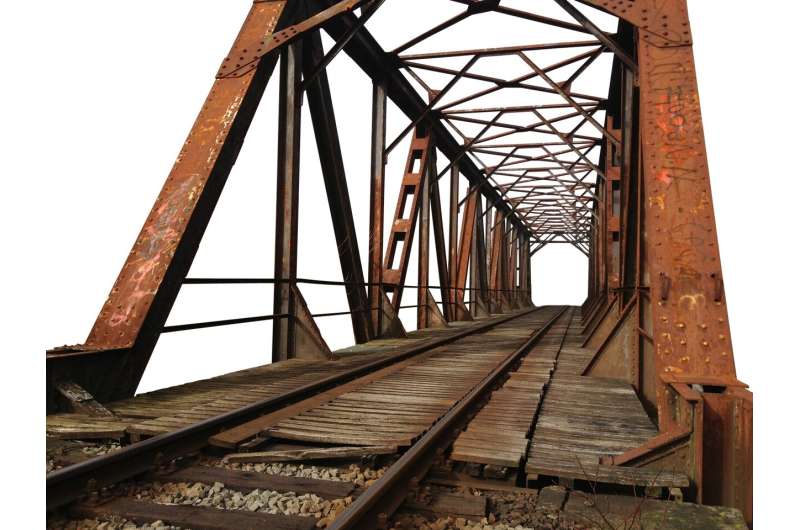
An innovative 3D printing technique called cold spray was applied to a Western Massachusetts bridge last month in a first-of-its-kind proof-of-concept demonstration that could reduce the repair cost of critical infrastructure and disruptions to passing traffic.
The test repair, led by the University of Massachusetts Amherst in collaboration with researchers from the Massachusetts Institute of Technology (MIT) Department of Mechanical Engineering, was made in Great Barrington, Massachusetts on the red bridge, formerly known as the “Brown Bridge” and built in 1949.
“Now that we’ve completed this proof-of-concept repair, we see a clear path to a solution that is much faster, less costly, easier, and less invasive,” said Simos Gerasimidis, associate professor of civil and environmental engineering at the University of Massachusetts Amherst, and one of the principal investigators on the project.
“To our knowledge, this is a first. Of course, there is some R&D that needs to be developed, but this is a huge milestone to that,” he added.
Other collaborators on the project include the Massachusetts Department of Transportation (MassDOT), the Massachusetts Technology Collaborative (MassTech), the U.S. Department of Transportation and the Federal Highway Administration.
“Any time you drive, you go under or over a corroded bridge,” Gerasimidis said. “They are everywhere. It’s impossible to avoid, and their condition often shows significant deterioration. We know the numbers.”
Across the U.S. 49% of the nation’s bridges are only in “fair” condition and 6.8% are rated “poor,” according to the 2025 Report Card for America’s Infrastructure. The projected cost to restore them exceeds $191 billion. Roughly 9% of Massachusetts’s 5,295 bridges are structurally deficient and require repair—a need that far outpaces available funding.
The former “Brown Bridge,” which crosses the Housatonic River at the intersection of state routes 7, 41 and 23, served as a demonstration site for new technologies aimed at addressing the broader crisis.
The cold spray technique of additive manufacturing (often called 3D printing) involves spraying high-velocity metal powder particles to coat sections of the beam. Repeated sprays create multiple layers, restoring thickness and other structural properties to the treated area.
This method has proven to be an effective solution for other large structures like submarines, airplanes and ships, but this is the first time it’s been applied to a bridge. Bridges present unique challenges due to their size and because the 3D printer must be brought on site.
One of the biggest advantages of the technique is that repairs can be made with minimal disruption to traffic. “Every time you do repairs on a bridge you have to block traffic, you have to make traffic controls for substantial amounts of time,” explained Gerasimidis. “This will allow us to [apply the technique] on this actual bridge while cars are going [across].”
Part of this work has been developing 3D LiDAR scanning methods to replace time-consuming, subjective visual assessments. This enables researchers to precisely identify corrosion, develop a digital repair plan and deposit the material only where necessary.
“By combining scanning with precise material deposition, we can be very targeted and say, ‘we’re going to print here and here and here and we’re going to give this bridge another 10 years of life,” which is huge,” he explains.
Gerasimidis and his team have been studying bridge deterioration and working with Massachusetts’s and other state DOTs for about a decade. “We know this problem quite well,” he says.
“We have seen thousands of inspection reports, we have gone to bridges. We have tested many beams in our lab, so we know how these things behave and exactly where we need to repair.”
The red bridge is scheduled for demolition in a few years. After that, the UMass team will take the sprayed beams back to their lab and test them, measuring how successfully the deposited steel powder adhered to the structure in the field compared to in a controlled lab setting, if it corroded further after it was sprayed, and determine its mechanical strength properties.
More information:
Research reports on this effort can be found here.
Citation:
Can 3D printing help repair the nation’s aging bridges? (2025, June 12)
retrieved 12 June 2025
from
This document is subject to copyright. Apart from any fair dealing for the purpose of private study or research, no
part may be reproduced without the written permission. The content is provided for information purposes only.













Leave a comment